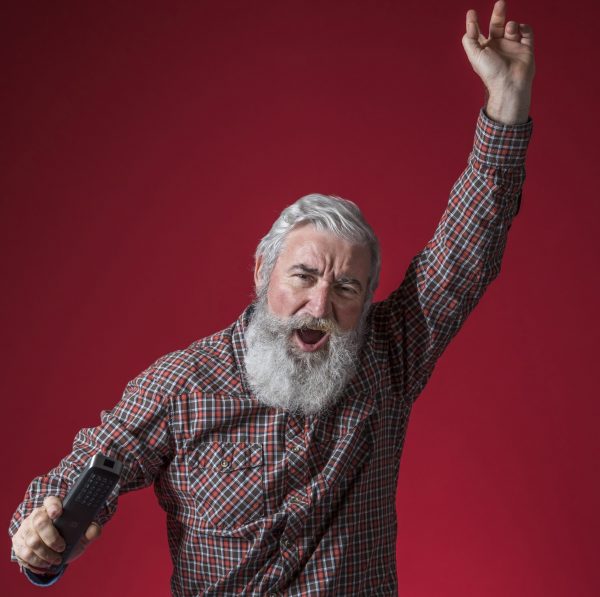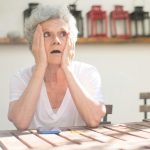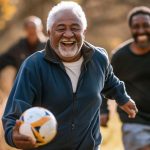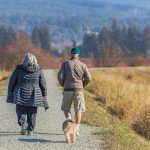Sometimes it seems like the older we get, the lazier we become.
Instead of taking the stairs we are happy to ride the elevator – even if it’s going to take us longer. It’s easier to go through a drive-up window than get out of the car and walk indoors; or to drive the quarter mile to the coffee shop instead of walking.
Today’s technology has made it even worse. If you don’t feel like shopping, Instacart or Walmart Delivery will be happy to deliver groceries to your front door. If cooking sounds like too much work, DoorDash, Uber Eats and other delivery services are happy to bring the meal of your choice to your home.
All of these “conveniences” greatly reduce the amount of movement you get on a daily basis. And that lack of movement will eventually start showing.
Your muscles will start tightening up and begin to atrophy. This can produce weakness and reduce flexibility, limiting your ability to bend down to pick things up off the floor and difficulties reaching items on higher shelves.
You’ll be more inclined to experience constipation. The less you move, the harder time you’ll have trying to poop. As a matter of fact, there was a huge increase in new-onset constipation during the pandemic, when people reduced their physical activity levels during lockdowns.
You might find your breathing becomes labored when you exert yourself. Even small amounts of exertion, like climbing stairs, bringing in groceries or getting in and out of the car can make you feel winded.
And don’t forget those joints! If you’re not moving enough, the synovial fluid that helps your joints move smoothly can’t circulate properly. This results in stiff, achy joints.
So if you’re experiencing any of these difficulties, it could be a sign that you need to increase your levels of daily movement. And it’s not nearly as hard to do as you might think.
A NEAT Way to Improve Physical Activity Levels
Whether you are currently active or not, there is an easy way to boost your physical activity levels and metabolism.
It’s a mind-blowing concept called non-exercise activity thermogenesis, or NEAT.
NEAT is the amount of energy you expend daily that isn’t the result of planned exercise. So it’s doing things like gardening, cooking dinner, washing dishes, vacuuming and other household chores. It is climbing the stairs at the mall or an office building, meandering your way through the grocery store aisles while shopping, and unloading the groceries from your car.
In other words, it’s all of the little movements we make every day. Even bobbing your legs and fidgeting count. So does the amount of time you spend chewing your food!
The thing is, all of these little movements make up a significant part of your daily energy expenditure.
For example, fidgeting increases your energy expenditure by 20-40% compared to resting levels. Chewing increases it by 20%. Strolling around the store doubles it, and purposeful walking can triple energy expenditure.
That makes it a pretty powerful tool when it comes to burning more calories. And it’s not a new concept.
Back in 1999, a study appeared in the peer-reviewed journal Science. The scientists had a group of non-obese volunteers overeat by 1,000 calories a day for eight weeks.
Well, it turned out that the overeaters who also increased their non-exercise activity thermogenesis experienced the least amount of fat gain. Those who failed to increase their NEAT, however, gained the most amount of fat.
But it’s not only about the thermogenic and fat-burning improvements. This type of increase in leisure time movements is also a great way to improve pain and stiffness.
Wake Up and Get Moving!
We know that when we wake up stiff in the morning, it generally disappears an hour or two after we start moving around. That’s because when you get up and start walking around, you get the flow of synovial fluid going again and it lubes your joints up.
It also helps reduce pain and stiffness through muscle activation and lengthening.
For example, I was recently talking with a 63-year-old associate who underwent partial hip replacement surgery a couple months ago. This type of surgery causes muscles of the thighs, hamstrings, glutes and calves to tighten up and become painful.
Inactivity makes it so much worse. So while she was working from home, she increased her NEAT by getting up every 20 minutes or so to do a few household chores, start dinner or just walk out to the mailbox. And when she was watching TV after work, she would perform simple stretches to help keep her legs, knees, hips and lower back from freezing up.
All of this extra movement was key to her quick recovery.
Keep in mind that NEAT is not a replacement for more vigorous physical activity. But it can really add to your movement levels throughout the day.
I like to put on some music and bop around the house while washing dishes, making my bed and doing laundry. But there are many other ways to boost your NEAT levels.
Stand and wash the dishes instead of using the dishwasher. Instead of trying to find the closest parking spot, choose one at the end of the parking lot. Walk around the house while talking on the phone. Send texts from a standing position. Take a walk in the park. Dance, sing, raise your arms and tap your toes!
Movement is life; life is movement.
SOURCES:
Tikkanen O, Haakana P, Pesola AJ, Häkkinen K, Rantalainen T, Havu M, Pullinen T, Finni T. Muscle activity and inactivity periods during normal daily life. PLoS One. 2013;8(1):e52228.
Remes-Troche JM, Coss-Adame E, Amieva-Balmori M, Velarde-Ruiz Velasco JA, Gómez-Castaños PC, Flores-Rendón R, Gómez-Escudero O, Rodríguez-Leal MC, Durán-Rosas C, Pinto-Gálvez SM, Priego-Parra BA, Triana-Romero A. Incidence of ‘new-onset’ constipation and associated factors during lockdown due to the COVID-19 pandemic. BMJ Open Gastroenterol. 2021 Sep;8(1):e000729.
Kayaoglu SA, Sert OZ. Constipation in the period of limited isolation during COVID-19 pandemic. Rev Assoc Med Bras. 2022 Feb;68(2):196-201.
Lovino P, Chiarioni G, Bilancio G, Cirillo M, Mekjavic IB, Pisot R, Ciacci C. New onset of constipation during long-term physical inactivity: a proof-of-concept study on the immobility-induced bowel changes. PLoS One. 2013 Aug 20;8(8):e72608.
Di Rosa M, Castrogiovanni P, Musumeci G. The Synovium Theory: Can Exercise Prevent Knee Osteoarthritis? The Role of “Mechanokines”, A Possible Biological Key. J Funct Morphol Kinesiol. 2019 Jan 23;4(1):11.
Levine JA. Nonexercise activity thermogenesis (NEAT): environment and biology. Am J Physiol Endocrinol Metab. 2004 May;286(5):E675-85.
Levine JA, Eberhardt NL, Jensen MD. Role of nonexercise activity thermogenesis in resistance to fat gain in humans. Science. 1999 Jan 8;283(5399):212-4.
von Loeffelholz C, Birkenfeld AL. Non-Exercise Activity Thermogenesis in Human Energy Homeostasis. [Updated 2022 Nov 25]. In: Feingold KR, Anawalt B, Blackman MR, et al., editors. Endotext [Internet]. South Dartmouth (MA): MDText.com, Inc.




